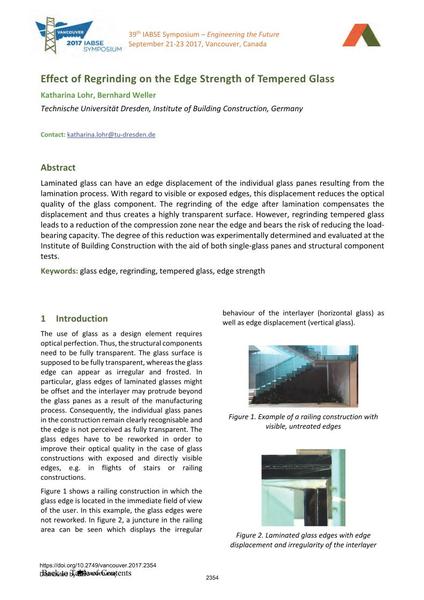Effect of Regrinding on the Edge Strength of Tempered Glass

|
|
|||||||||||
Bibliographic Details
| Author(s): |
Katharina Lohr
(Technische Universität Dresden, Institute of Building Construction, Germany)
Bernhard Weller (Technische Universität Dresden, Institute of Building Construction, Germany) |
||||
|---|---|---|---|---|---|
| Medium: | conference paper | ||||
| Language(s): | English | ||||
| Conference: | IABSE Symposium: Engineering the Future, Vancouver, Canada, 21-23 September 2017 | ||||
| Published in: | IABSE Symposium Vancouver 2017 | ||||
|
|||||
| Page(s): | 2354-2361 | ||||
| Total no. of pages: | 8 | ||||
| Year: | 2017 | ||||
| DOI: | 10.2749/vancouver.2017.2354 | ||||
| Abstract: |
Laminated glass can have an edge displacement of the individual glass panes resulting from the lamination process. With regard to visible or exposed edges, this displacement reduces the optical quality of the glass component. The regrinding of the edge after lamination compensates the displacement and thus creates a highly transparent surface. However, regrinding tempered glass leads to a reduction of the compression zone near the edge and bears the risk of reducing the load‐ bearing capacity. The degree of this reduction was experimentally determined and evaluated at the Institute of Building Construction with the aid of both single‐glass panes and structural component tests. |
||||
| Keywords: |
glass edge regrinding tempered glass edge strength
|
||||
